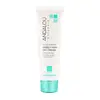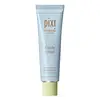What's inside
What's inside
 Key Ingredients
Key Ingredients

 Benefits
Benefits

 Concerns
Concerns

 Ingredients Side-by-side
Ingredients Side-by-side

Aloe Barbadensis Leaf Juice
Skin ConditioningWater
Skin ConditioningCocos Nucifera Water
MaskingGlycerin
HumectantDicaprylyl Carbonate
EmollientCocos Nucifera Oil
MaskingCetyl Alcohol
EmollientGlyceryl Stearate
EmollientStearic Acid
CleansingTocopherol
AntioxidantMyristyl Myristate
EmollientAllantoin
Skin ConditioningOpuntia Ficus-Indica Stem Extract
Skin ConditioningMalus Domestica Fruit Cell Culture Extract
Skin ConditioningCichorium Intybus Root Oligosaccharides
Skin ConditioningCaesalpinia Spinosa Gum
Skin ConditioningCoffea Arabica Husk Extract
AntioxidantSodium Hyaluronate
HumectantArgania Spinosa Kernel Oil
EmollientOpuntia Ficus-Indica Seed Oil
EmollientHelianthus Annuus Seed Oil
EmollientSqualane
EmollientMagnesium Ascorbyl Phosphate
AntioxidantPanthenol
Skin ConditioningCamellia Sinensis Leaf Extract
AntimicrobialAspalathus Linearis Extract
Skin ConditioningPhenethyl Alcohol
MaskingEthylhexylglycerin
Skin ConditioningCoconut Alkanes
EmollientCitrus Aurantifolia Peel Oil
MaskingMentha Aquatica Leaf Oil
MaskingAloe Barbadensis Leaf Juice, Water, Cocos Nucifera Water, Glycerin, Dicaprylyl Carbonate, Cocos Nucifera Oil, Cetyl Alcohol, Glyceryl Stearate, Stearic Acid, Tocopherol, Myristyl Myristate, Allantoin, Opuntia Ficus-Indica Stem Extract, Malus Domestica Fruit Cell Culture Extract, Cichorium Intybus Root Oligosaccharides, Caesalpinia Spinosa Gum, Coffea Arabica Husk Extract, Sodium Hyaluronate, Argania Spinosa Kernel Oil, Opuntia Ficus-Indica Seed Oil, Helianthus Annuus Seed Oil, Squalane, Magnesium Ascorbyl Phosphate, Panthenol, Camellia Sinensis Leaf Extract, Aspalathus Linearis Extract, Phenethyl Alcohol, Ethylhexylglycerin, Coconut Alkanes, Citrus Aurantifolia Peel Oil, Mentha Aquatica Leaf Oil
Water
Skin ConditioningGlycerin
HumectantAloe Barbadensis Leaf Water
MaskingPropanediol
SolventSalix Alba Bark Extract
AstringentNiacinamide
SmoothingArginine
MaskingCentaurea Cyanus Flower Extract
AstringentHyacinthus Orientalis Extract
Skin ConditioningViola Tricolor Extract
EmollientCharcoal Extract
Skin ConditioningCucumis Sativus Fruit Extract
EmollientAllantoin
Skin ConditioningBetaine
HumectantFructooligosaccharides
HumectantSodium Hyaluronate
HumectantCeramide NP
Skin ConditioningGlucose
HumectantTocopherol
AntioxidantAscorbic Acid
AntioxidantCharcoal Powder
AbrasiveCarbomer
Emulsion StabilisingDiheptyl Succinate
EmollientPentylene Glycol
Skin ConditioningCetearyl Alcohol
Emollient1,2-Hexanediol
Skin ConditioningCapryloyl Glycerin/Sebacic Acid Copolymer
Skin ConditioningC14-22 Alcohols
Emulsion StabilisingArachidyl Alcohol
EmollientSilica
AbrasiveKaolin
AbrasiveEthylhexylglycerin
Skin ConditioningBehenyl Alcohol
EmollientC12-20 Alkyl Glucoside
EmulsifyingArachidyl Glucoside
EmulsifyingXylose
HumectantCaprylyl Glycol
EmollientPhenoxyethanol
PreservativeWater, Glycerin, Aloe Barbadensis Leaf Water, Propanediol, Salix Alba Bark Extract, Niacinamide, Arginine, Centaurea Cyanus Flower Extract, Hyacinthus Orientalis Extract, Viola Tricolor Extract, Charcoal Extract, Cucumis Sativus Fruit Extract, Allantoin, Betaine, Fructooligosaccharides, Sodium Hyaluronate, Ceramide NP, Glucose, Tocopherol, Ascorbic Acid, Charcoal Powder, Carbomer, Diheptyl Succinate, Pentylene Glycol, Cetearyl Alcohol, 1,2-Hexanediol, Capryloyl Glycerin/Sebacic Acid Copolymer, C14-22 Alcohols, Arachidyl Alcohol, Silica, Kaolin, Ethylhexylglycerin, Behenyl Alcohol, C12-20 Alkyl Glucoside, Arachidyl Glucoside, Xylose, Caprylyl Glycol, Phenoxyethanol
 Reviews
Reviews

Ingredients Explained
These ingredients are found in both products.
Ingredients higher up in an ingredient list are typically present in a larger amount.
Allantoin is a soothing ingredient known for its protective and moisturizingg properties. Because of this, it is often added to products with strong active ingredients.
Studies show higher concentrations of this ingredient can promote wound healing.
Though it can be derived from the comfrey plant, allantoin is produced synthetically for cosmetic products to ensure purity.
Learn more about AllantoinEthylhexylglycerin (we can't pronounce this either) is commonly used as a preservative and skin softener. It is derived from glyceryl.
You might see Ethylhexylglycerin often paired with other preservatives such as phenoxyethanol. Ethylhexylglycerin has been found to increase the effectiveness of these other preservatives.
Glycerin is already naturally found in your skin. It helps moisturize and protect your skin.
A study from 2016 found glycerin to be more effective as a humectant than AHAs and hyaluronic acid.
As a humectant, it helps the skin stay hydrated by pulling moisture to your skin. The low molecular weight of glycerin allows it to pull moisture into the deeper layers of your skin.
Hydrated skin improves your skin barrier; Your skin barrier helps protect against irritants and bacteria.
Glycerin has also been found to have antimicrobial and antiviral properties. Due to these properties, glycerin is often used in wound and burn treatments.
In cosmetics, glycerin is usually derived from plants such as soybean or palm. However, it can also be sourced from animals, such as tallow or animal fat.
This ingredient is organic, colorless, odorless, and non-toxic.
Glycerin is the name for this ingredient in American English. British English uses Glycerol/Glycerine.
Learn more about GlycerinSodium Hyaluronate is hyaluronic acid's salt form. It is commonly derived from the sodium salt of hyaluronic acid.
Like hyaluronic acid, it is great at holding water and acts as a humectant. This makes it a great skin hydrating ingredient.
Sodium Hyaluronate is naturally occurring in our bodies and is mostly found in eye fluid and joints.
These are some other common types of Hyaluronic Acid:
Learn more about Sodium HyaluronateTocopherol (also known as Vitamin E) is a common antioxidant used to help protect the skin from free-radicals and strengthen the skin barrier. It's also fat soluble - this means our skin is great at absorbing it.
Vitamin E also helps keep your natural skin lipids healthy. Your lipid skin barrier naturally consists of lipids, ceramides, and fatty acids. Vitamin E offers extra protection for your skin’s lipid barrier, keeping your skin healthy and nourished.
Another benefit is a bit of UV protection. Vitamin E helps reduce the damage caused by UVB rays. (It should not replace your sunscreen). Combining it with Vitamin C can decrease sunburned cells and hyperpigmentation after UV exposure.
You might have noticed Vitamin E + C often paired together. This is because it is great at stabilizing Vitamin C. Using the two together helps increase the effectiveness of both ingredients.
There are often claims that Vitamin E can reduce/prevent scarring, but these claims haven't been confirmed by scientific research.
Learn more about TocopherolWater. It's the most common cosmetic ingredient of all. You'll usually see it at the top of ingredient lists, meaning that it makes up the largest part of the product.
So why is it so popular? Water most often acts as a solvent - this means that it helps dissolve other ingredients into the formulation.
You'll also recognize water as that liquid we all need to stay alive. If you see this, drink a glass of water. Stay hydrated!
Learn more about Water